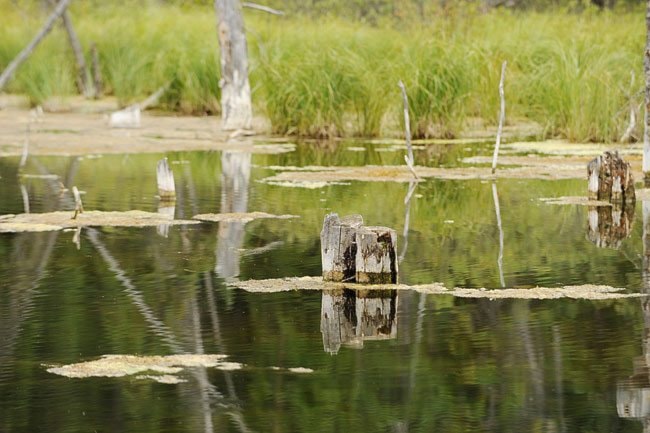Liberal MLA Don Inverarity wants McIntyre Creek protected from future development.
“We’re the wilderness city,” he said. “Lets see what that really means to the city of Whitehorse and the Yukon government.”
Wednesday, Inverarity and Cherish Clarke, the Liberal candidate for the riding of Takhini-Kopper King, held a news conference affirming their support for curbing development in one of the city’s few remaining wildlife corridors.
“It has been one of my top priorities as an MLA,” said Inverarity. “I’ve advocated for it in the legislature, city hall and have been a strong supporter of Friends of McIntyre Creek.”
In 2009, Inverarity tried to get the area turned into a park, but the idea never got off the ground.
“The current government used its majority to stop that discussion,” he said. “It demonstrated to me that the value the Yukon Party places on protecting its wilderness.”
Development in the McIntyre Creek area is a big neighbourhood issue, said Clarke.
“I’ve already heard from residents of the Takhini subdivision about how much they value this wilderness area,” she said.
In the Official Community Plan the city has identified land around McIntyre Creek for the expansion of the Porter Creek subdivision.
The plans for Porter Creek D are still in the preliminary stages, said Mike Gau, the city’s manager of planning and development services.
It has been in the works since 2005, but was put on the back burner in favour of the Whistle Bend subdivision.
Now that Whistle Bend is underway plans for Porter Creek D are in the works.
“It’s been identified for priority planning in the Official Community Plan,” said Gau. “We’ve been meeting with the stakeholder groups and just bringing all of our reports together.”
A wildlife study of the area is also being done.
“We hope too address all the environmental issues before we go much further,” said Gau.
Once all the preliminary planning and consultation work is done, it will be presented to council this fall.
“We haven’t officially made the decision to move forward yet,” said Gau. “We’re leaving that up to council in November.”
After that, there will be a lengthy process of public consultation.
“If council says, ‘go ahead’ we need to talk to the public about how this development might proceed,” he said. “Can the perceived environmental impacts be mitigated? And can this be done in a way that’s going to be acceptable to the community?
“We know that some of the community supports the development, and a lot of the community doesn’t, but we also know that the community needs housing.”
The plan calls for a road to be built, extending Pine Street across the creek and all the way to the Alaska Highway.
For some, that’s unacceptable.
“The primary interest here is to protect the wildlife corridor and a freeway through this section of McIntyre Creek isn’t going to do it,” said Inverarity.
However even if Porter Creek D doesn’t go ahead, the road might.
“We have various traffic studies that say a bridge across McIntyre Creek and a connection to Pine Street from the Alaska Highway is necessary for transportation reasons,” said Gau. “Whether that development occurs or not, the city favours that transportation linkage.”
With the Whistle Bend subdivision coming online in the next couple of years, there will be up to 8,000 more people in the area.
There are plans to expand Mountainview Drive to four lanes, but even with all that asphalt the Pine Street extension may still be necessary.
“There will be a significant impact to the existing residents of Porter Creek once Whistle Bend traffic joins Mountainview,” said Gau.
However, most people Clarke has talked to in the neighbourhood don’t support a road through McIntyre Creek.
“The residents of Takhini will not support the construction of another road or bridge across the creek as part of that development, and neither do we,” she said.
Ultimately these development decisions rest with the city.
There is a development protocol between the Yukon government and the city that stipulates the territory will abide by the city’s decisions.
However, the territory is the landowner and the developer, so they do have some influence over the process.
“A new level of government could change direction, but they would need to back out of previous agreements if they chose to not follow the city’s direction,” said Gau.
Contact Josh Kerr at
joshk@yukon-news.com
